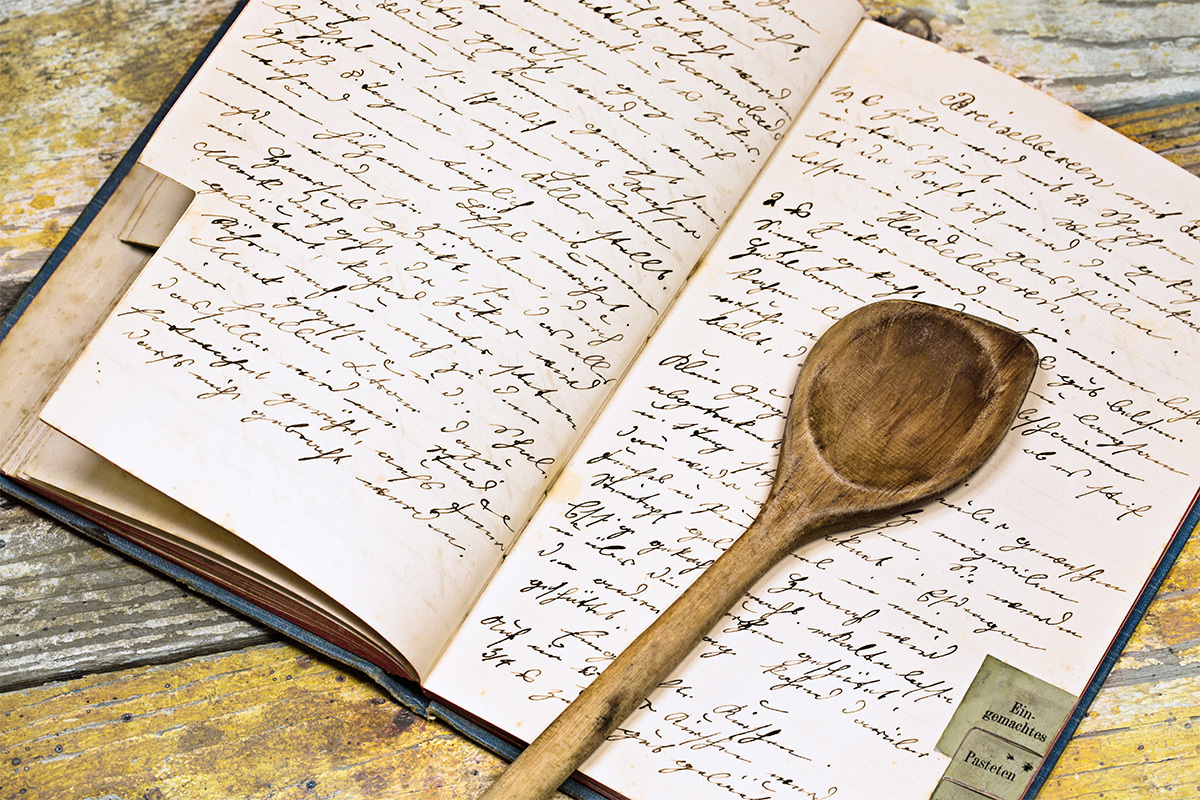Golden honey cascades from the bear-shaped jar into the pot, my grandmother Sarah standing beside me, watchful. She has been gone for 15 years but I feel her there, making sure that I get this just right. I pull the walnuts out of the refrigerator — so hard to find this time of year — and place a handful into the food processor bowl, made cloudy from overuse.
My grandmother is concerned. She liked to place the walnuts on a cutting board, place a dish towel on top and roll over them with the empty seltzer bottle she kept on hand just for this purpose. At least she is happy to see that I have pulsed them to the point of being chopped but not pulverized. She fixes her gaze on me as I measure out the teaspoon of ginger, making sure I put just enough in to find the right balance of sweet and spicy. She smiles as I add the ginger and nuts, along with generous portion of matzah farfel, into the now bubbling honey.
“Stir,” she seems to say to me. “And keep stirring. And watch it. You don’t vant it to burn.” Even in my imagination, her Russian accent is as strong as the day she arrived in the United States.
Once everything is combined, I pour it all onto the wax paper I have placed onto a tray. My grandmother seems to look at me as if wondering, “Why didn’t I think of that?” She would pour the matzah farfel concoction right onto a cutting board, where she would leave it to harden over all eight days of Passover. I will let mine harden for the next 24 hours, but to make sure it stays soft and pliant, I will cut it up into squares and place it into a Tupperware container. By the end of the holiday, my grandmother’s version would have stiffened to the point where we’d have to ply it off the board with a knife. We’d bite into it, not minding the difficulty chewing and ignoring the chunks of honey and walnut that would be left in our teeth.
I am making Grandma Sarah’s famous candy/cookie for Passover called imberlach. Throughout my life, I never knew anyone else whose family made imberlach, much less heard of the confection that falls somewhere in between candy and cookie. That’s what makes it even more special to me, a family tradition that felt like ours alone.
Imberlach, also called ingberlach, means “a little ginger” in Yiddish. It is an Ashkenazi dish that my grandmother and certainly others of her generation brought with them from Eastern Europe, although the exact origins are hard to pin down.
Making imberlach has been a difficult tradition to keep. My grandmother did not like to have us in the kitchen while she cooked and she never wrote recipes down. I still cannot replicate her stuffed cabbage and I did not know how to make imberlach until my mother bought me a copy of “Melting Pot Memories: The Rabinowitz Family Cookbook.” That recipe called for hazelnuts instead of walnuts, but the other ingredients and measurements would suffice. You can now find different versions of the recipe online. As with most Jewish traditions, every family has their own spin on it, using different kinds of nuts and, in some recipes, carrots.
I don’t make it every year. When I suggest making it, my mother, my sister or aunt will discourage me. “It’s too fattening,” one will say. “I can’t stop eating it.” In recent years, my sister’s sister-in-law introduced us to the addictive chocolate-covered, caramelized matzah treat rightly known as matzah crack, and they want to save their calories for that. The men in my family never understood it, the way they never understood our love for taglach, a similarly sticky confection, so they don’t care if it shows up or not.
But I do.
I proudly place the tray of golden gooey squares onto the table at the end of our seder meal. “You made that honey crap?” my cousin Cory says, rolling his eyes at me, even though I know that seeing it brings back fond memories of the grandmother who watched him every day as a child while my aunt worked. He had spent so much time with her that, at age 3, he acquired a slight Russian accent, once commanding me to “open da vindow.”
“What is that?” Cory’s young kids, breathless after running around in their search for the afikomen, ask. My aunt, their grandmother, jumps in. “Your great-grandmother Sarah used to make that every Passover,” she tells them. “She was a very special lady,” she adds, going on to tell them more about the family matriarch they never met. “Try it,” she urges, pulling a piece off the tray to offer it to them. The kids poke at it and then reach over for the chocolate-covered macaroons instead.
I look at the mostly full tray but I am not disappointed that the imberlach remains untouched. Instead, I am happy that I have brought my grandmother back to our Passover table. I feel her there again, and know she is smiling at the kids’ disinterest in our creation. “You vere like that, too,” I hear her say to me. “Don’t vorry if they don’t eat it. We’ll try again next year.”
And I know we will.
Recipe for Passover Imberlach, adapted from “Melting Pot Memories”:
Ingredients:
2 ½ to 3 cups honey (slightly less than a 40 ounce jar)
8 ounces matzah farfel (about 2 cups)
1 cup walnuts, chopped
1 tablespoon plus 1 teaspoon ground ginger
¼ cup water
Optional:
Candied ginger pieces
Additional chopped walnuts
Sea salt
Directions:
Pour honey into a large saucepan and bring to a boil.
Slowly stir in matzah farfel, until the farfel is fully coated and the mixture is thick but not so thick that you are unable to keep stirring. You may need to add more farfel or honey to get the right consistency, which should be similar to a granola bar.
Stir in the nuts and ginger, being sure to distribute evenly. Lower the temperature to a low-medium heat and continue to stir, adding in the water as needed (it’s too thick if you have difficulty stirring).
Cook for 10-15 minutes or until the mixture is a golden brown, continually stirring and checking to make sure it does not burn. There is a short window between browning and burning so be careful to get it just right!
Pour the mixture onto a lined cutting board or rectangular tray and spread out according to the thickness you prefer (it should be somewhere between the thickness of a granola bar and a blondie). You can top with candied ginger pieces, more nuts or sea salt.
Cut into squares before it sets. Depending on the thickness of the mixture, you should get between 24 and 36 pieces.








